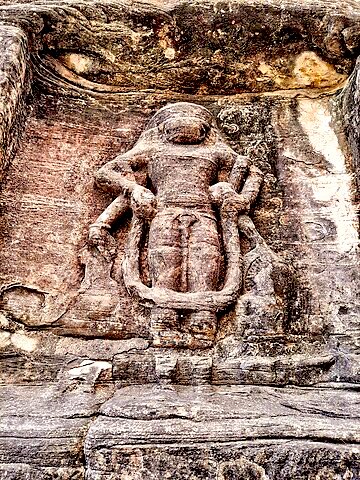Today is the day of this historic Jambudiva declaration.
During the first week of June 1801, Marudhu Pandyas & Oomaithurai were fighting against British by opening multiple battle fronts around Kalayarkovil. Looking at the magnitude of the operations, Colonel Agnew asked for reinforcement from Chennai as he was certain that Marudhus were planning a major offensive sooner
While waiting for them, he issued a proclamation on June 12, 1801 worded with strict warnings & the usual ploy of divide and rule. He blamed Chinna Marudhu of giving protection of ‘company’s rebels’ & trying to usurp Sivaganga from the lawful heirs. He asked ‘Vellai Marudhu’- Periya Marudhu to hand over his brother immediately. He threatened ‘dreadful punishment’ of the natives if his orders are not complied with.
During the first week of June 1801, Marudhu Pandyas & Oomaithurai were fighting against British by opening multiple battle fronts around Kalayarkovil. Looking at the magnitude of the operations, Colonel Agnew asked for reinforcement from Chennai as he was certain that Marudhus were planning a major offensive sooner
While waiting for them, he issued a proclamation on June 12, 1801 worded with strict warnings & the usual ploy of divide and rule. He blamed Chinna Marudhu of giving protection of ‘company’s rebels’ & trying to usurp Sivaganga from the lawful heirs. He asked ‘Vellai Marudhu’- Periya Marudhu to hand over his brother immediately. He threatened ‘dreadful punishment’ of the natives if his orders are not complied with.

Unfazed, Chinna Marudha issued a counter proclamation. This was the first of its kind in the war for Indian Independence.
The proclamation was pasted in the walls of Trichy fort & in the Srirangam temple on 16th June 1801. Addressed to the people of Jambu Dwipa,Marudhu was scathing in his attack towards British. The proclamation was a remarkable document woven with data & ideals.
The proclamation was pasted in the walls of Trichy fort & in the Srirangam temple on 16th June 1801. Addressed to the people of Jambu Dwipa,Marudhu was scathing in his attack towards British. The proclamation was a remarkable document woven with data & ideals.

It clearly states that the war against British was Pan-Indian & not restricted to Tamilagam. It was attempted to get the required cooperation from the masses & also to motivate the warriors. It warned that the internal disputes & indifference would lead to handing over the power in platter to British.
Marudhu was trying to push the patriotic cause through this proclamation.

Marudhu was trying to push the patriotic cause through this proclamation.


Following up the proclamation, Sivaganga army launched multiple attacks on British,. War fronts are opened at Sivaganga, Kalayarkovil, Ramanathapuram & Tirumayam.
British had to send most of the experienced generals to counter this offensive. At the end, they could win over the valiant warriors only through treachery & betrayal. A lesson for us to remember on this historic day
British had to send most of the experienced generals to counter this offensive. At the end, they could win over the valiant warriors only through treachery & betrayal. A lesson for us to remember on this historic day

• • •
Missing some Tweet in this thread? You can try to
force a refresh





















